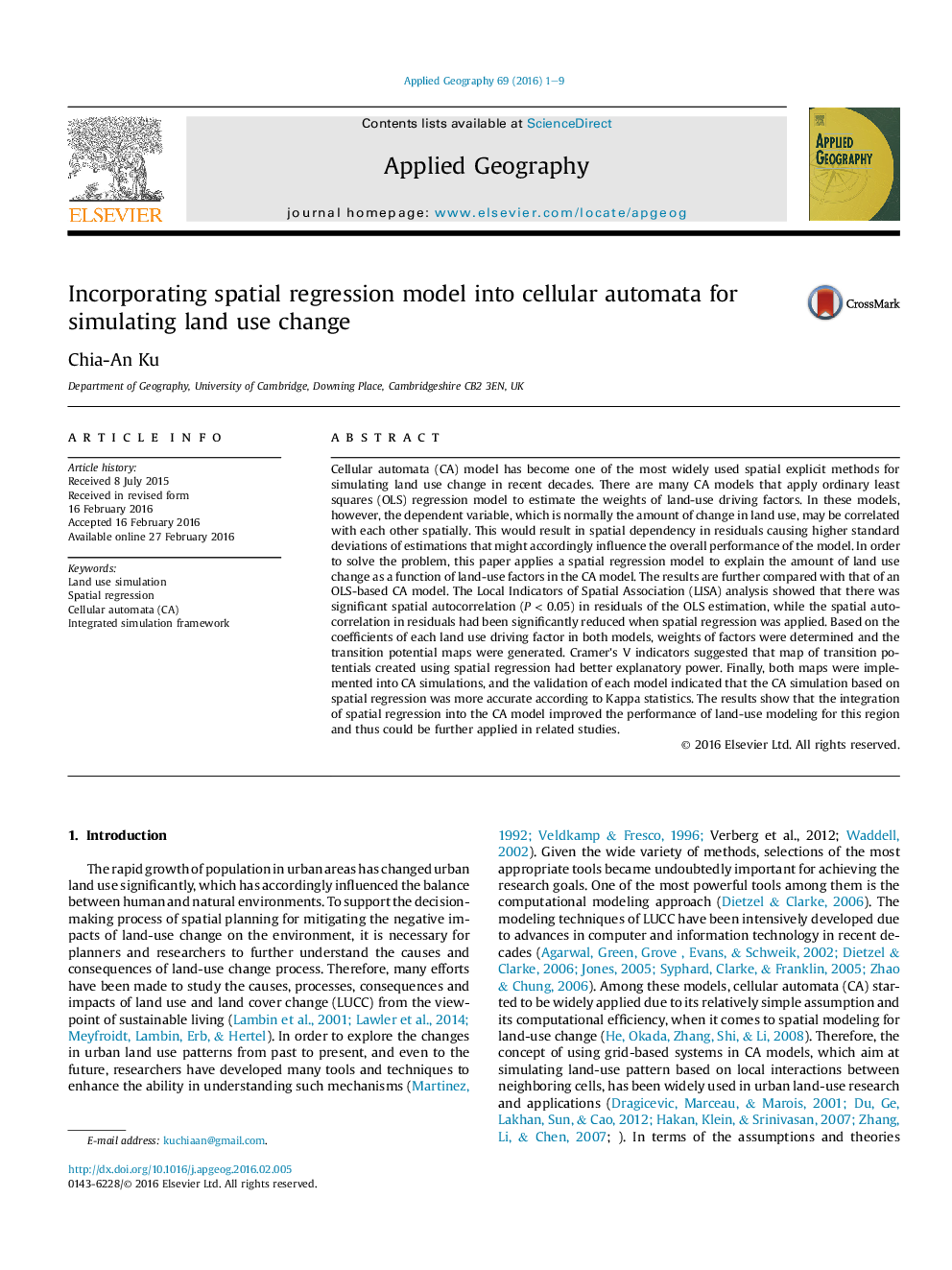| کد مقاله | کد نشریه | سال انتشار | مقاله انگلیسی | نسخه تمام متن |
|---|---|---|---|---|
| 83159 | 158692 | 2016 | 9 صفحه PDF | دانلود رایگان |
• An integrated simulation framework aims to improve the performance of cellular automata (CA) based land-use simulation.
• Spatial autocorrelation in the function for coefficient estimation could be reduced by applying spatial regression model.
• Comparison of the predictive accuracy of models with or without the consideration of spatial autocorrelation.
• The overall accuracy increased as a result of spatial autocorrelation being explained in the regression model.
Cellular automata (CA) model has become one of the most widely used spatial explicit methods for simulating land use change in recent decades. There are many CA models that apply ordinary least squares (OLS) regression model to estimate the weights of land-use driving factors. In these models, however, the dependent variable, which is normally the amount of change in land use, may be correlated with each other spatially. This would result in spatial dependency in residuals causing higher standard deviations of estimations that might accordingly influence the overall performance of the model. In order to solve the problem, this paper applies a spatial regression model to explain the amount of land use change as a function of land-use factors in the CA model. The results are further compared with that of an OLS-based CA model. The Local Indicators of Spatial Association (LISA) analysis showed that there was significant spatial autocorrelation (P < 0.05) in residuals of the OLS estimation, while the spatial autocorrelation in residuals had been significantly reduced when spatial regression was applied. Based on the coefficients of each land use driving factor in both models, weights of factors were determined and the transition potential maps were generated. Cramer's V indicators suggested that map of transition potentials created using spatial regression had better explanatory power. Finally, both maps were implemented into CA simulations, and the validation of each model indicated that the CA simulation based on spatial regression was more accurate according to Kappa statistics. The results show that the integration of spatial regression into the CA model improved the performance of land-use modeling for this region and thus could be further applied in related studies.
Journal: Applied Geography - Volume 69, April 2016, Pages 1–9
